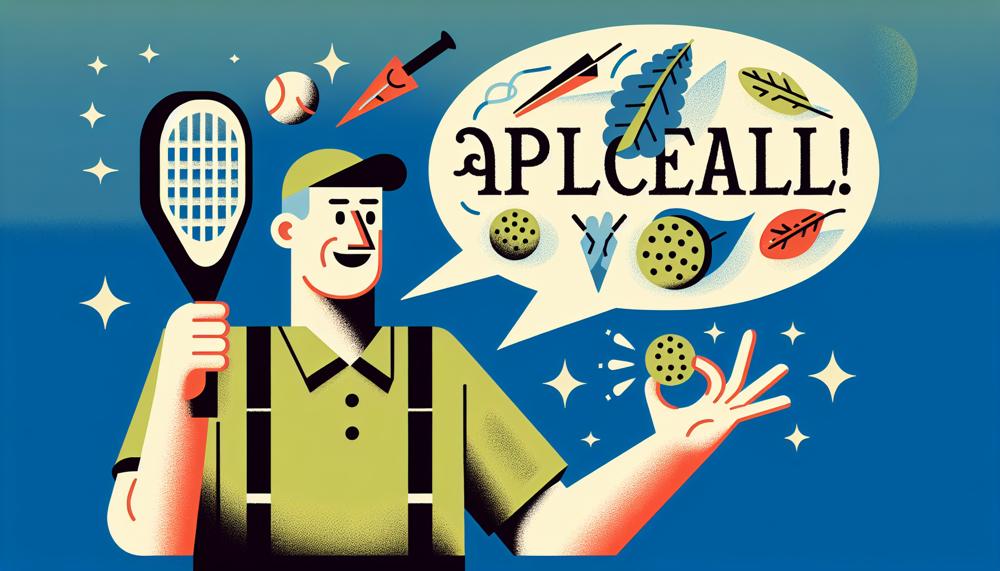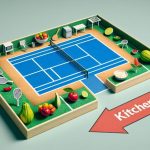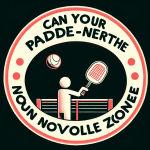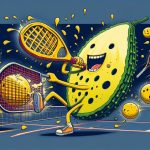Welcome to the vibrant and dynamic world of pickleball, where players communicate in a language all their own.
If you’re new to this wildly popular sport, you may have already noticed some peculiar terms being tossed around on the court. Don’t fret, my friend, for you are not alone.
Pickleball has its own unique slang that can be perplexing to beginners, but adds a playful and spirited element to the game for seasoned players. From “dink” to “third shot drop,” these phrases may sound unfamiliar at first, but fear not.
So grab your trusty paddle and let’s delve into the fascinating world of pickleball slang.
Key Takeaways
- Pickleball terminology is used by players to describe shots, situations, and events in the game.
- It fosters communication and adds an enjoyable aspect to the sport.
- Familiarity with pickleball lingo is crucial for understanding the rules and strategies of the game.
- The game was founded in 1965 and has quickly become one of the most popular sports in North America.
- Paddles, balls, court dimensions, scoring system, and techniques are all crucial components of pickleball.
Pickleball is more than just a game – it’s a tight-knit community. And like any community, it has its own unique language that brings players together. This specialized vocabulary, known as pickleball terminology, is an essential part of the sport and can greatly enhance the overall experience for players. But what exactly is pickleball terminology, and why is it so important? Let’s delve deeper into this topic.
Table of Contents
What is Pickleball Terminology?
Pickleball terminology refers to the informal language used by players when discussing the game. It encompasses words that describe different types of shots, such as ‘dink’, ‘lob’, and ‘volley’. It also includes terms that refer to specific situations or events during a match, such as ‘getting pickled’, ‘golden pickle’, and ‘body bag’. While these terms may sound unfamiliar to those new to pickleball, they are crucial for effective communication on the court.
Why is Pickleball Terminology Important?
Understanding the Rules and Strategies
Familiarity with pickleball lingo is essential for comprehending the rules and strategies of the game. For example, if someone instructs you to “stack”, it means positioning yourself diagonally from your partner on the same side of the court. Or if someone exclaims they got “pickled”, you’ll know they were caught off guard by a surprise shot. Utilizing pickleball terminology also facilitates communication and strategy planning during a match.
Promoting a Fun and Inclusive Environment
Pickleball is renowned for its welcoming community, and pickleball terminology contributes to cultivating this atmosphere. It adds a playful and friendly element to the sport, making it more enjoyable for players. Furthermore, it helps newcomers feel included and part of the community as they learn the lingo.
Building Camaraderie and Friendships
Pickleball terminology serves as a means for players to bond and develop strong relationships with one another.
Dink
Pickleball is a game that demands meticulousness, forethought, and delicacy. While some may believe that it’s all about sheer force and rapidity, the true masters know that the key to triumph lies in mastering the art of dinking. So what exactly is a dink and how does it factor into the game? Let’s delve into the intricacies.
What is a Dink?
A dink is a gentle shot that lands in the opponent’s non-volley zone, commonly referred to as the kitchen. It is often used as a countermeasure against powerful shots from the adversary. This shot requires a featherlike touch and precise placement to keep the ball low and close to the net. The goal of a dink is to compel the opponent to hit an upward shot, making it easier for you or your partner to launch an attack and score a point.
How to Execute a Dink
To execute a successful dink, one must have mastery over their racket and body. Here are some tips to assist you in perfecting this pivotal technique:
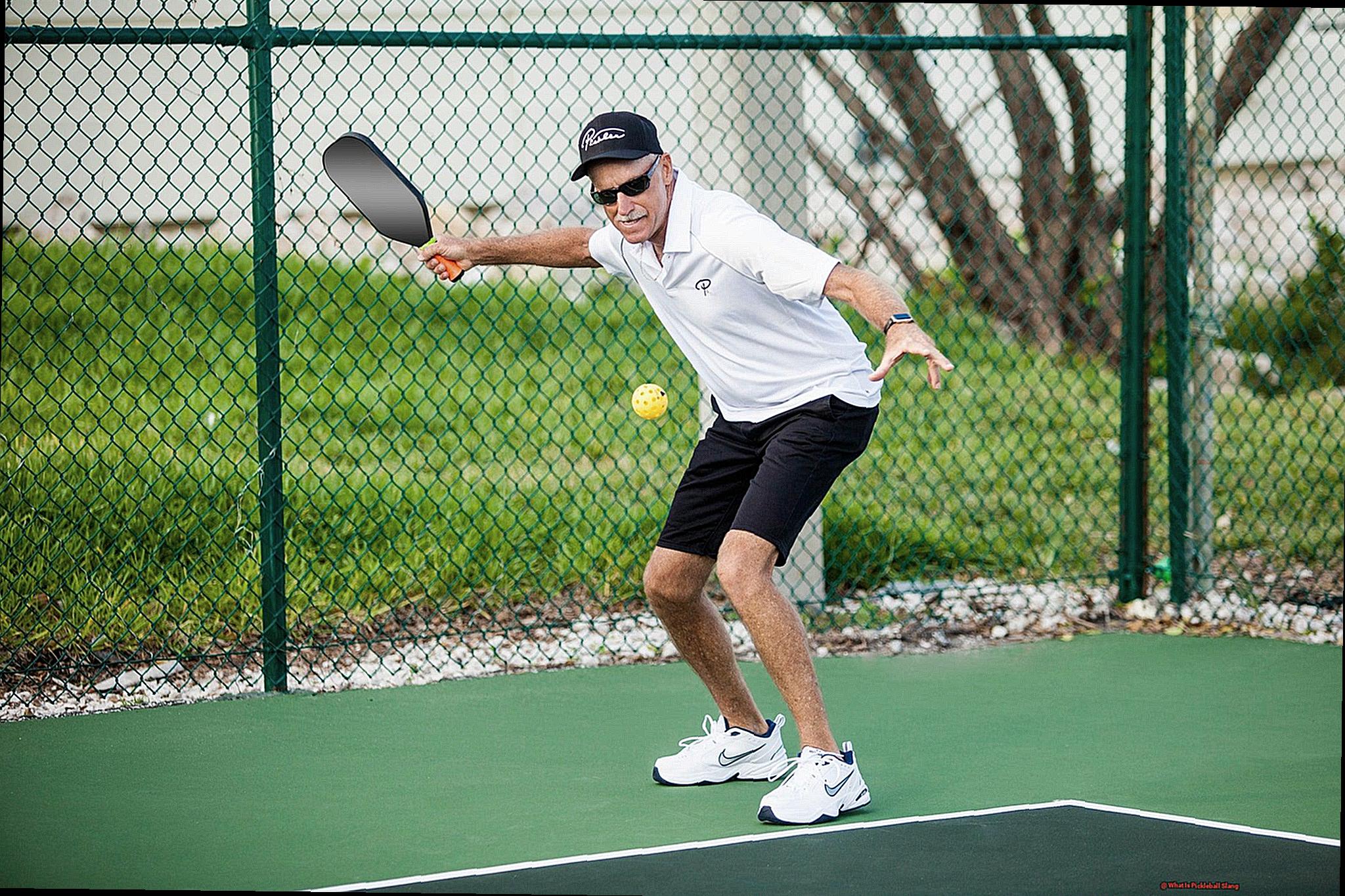
- Keep Your Wrist Supple: A tense wrist can result in a rigid shot that lacks the necessary softness or spin to land in the kitchen. Keep your wrist relaxed for better control over your shots.
- Harness Your Leg Power: The force behind a dink comes from your legs, not your arms. Use your legs to generate momentum and step into the shot.
- Aim for Your Opponent’s Feet: The optimal spot to aim for when executing a dink is your opponent’s feet. This makes it challenging for them to hit an upward shot and gives you an edge in the game.
- Vary Your Shots: Don’t stick to one type of dink. Alter the height and spin of your shots to keep your opponents on their toes and unbalanced.
- Practice, Practice, Practice: Dinking is a skill that requires patience and practice to master. Keep practicing and experimenting with different shots to discover what works best for you.
Ernie
The enigmatic and powerful shot known as the “Ernie” has become a buzzword in the world of pickleball. As a player of racket sports, you may have heard of this term and wondered what it entails and how to master it. In this blog post, we will delve into the intricacies of this move and explore its origins and techniques.
So, what exactly is an Ernie? Simply put, it is a shot played outside the non-volley zone in pickleball. This term was coined by videographer Jeff Shank in 2010 after observing player Erne Perry dominate rallies with this skillful shot. Since then, it has gained popularity and proven to be a formidable weapon on the court, requiring a combination of skill, patience, and agility to execute successfully.
To effectively play an Ernie, precise timing and anticipation are crucial. Here are some tips on how to master this shot and use it to your advantage:
- Exercise Patience: The key to playing an Ernie is waiting for the right opportunity. Since it can only be played from outside the non-volley zone, keep a close eye on your opponent’s movements and wait for them to hit a high ball that you can use for an Ernie.
- Anticipate the Ball’s Trajectory: As soon as your opponent hits a high ball, anticipate where it will land and position yourself accordingly. This will give you an advantage in executing the shot.
- Move with Speed: Once you have positioned yourself, move swiftly towards the ball. Quickness is essential in playing an Ernie as you need to hit the ball before it bounces.
- Aim for a High Angle: The key to an effective Ernie is hitting the ball at a high angle, catching your opponents off guard. This angle gives them less time to react and return the shot.
- Practice Makes Perfect: Like any other shot, mastering the Ernie requires practice. Dedicate time to perfecting your timing, anticipation, and speed to execute this shot flawlessly.
But what if you find yourself on the receiving end of an Ernie? Don’t panic, here are some ways to defend against this powerful shot:
Limit Your Opponent’s Options: The best defense against an Ernie is to restrict your opponent’s options. Try to keep them from playing the shot by hitting a low and fast ball that they can’t use for an Ernie.
Lob
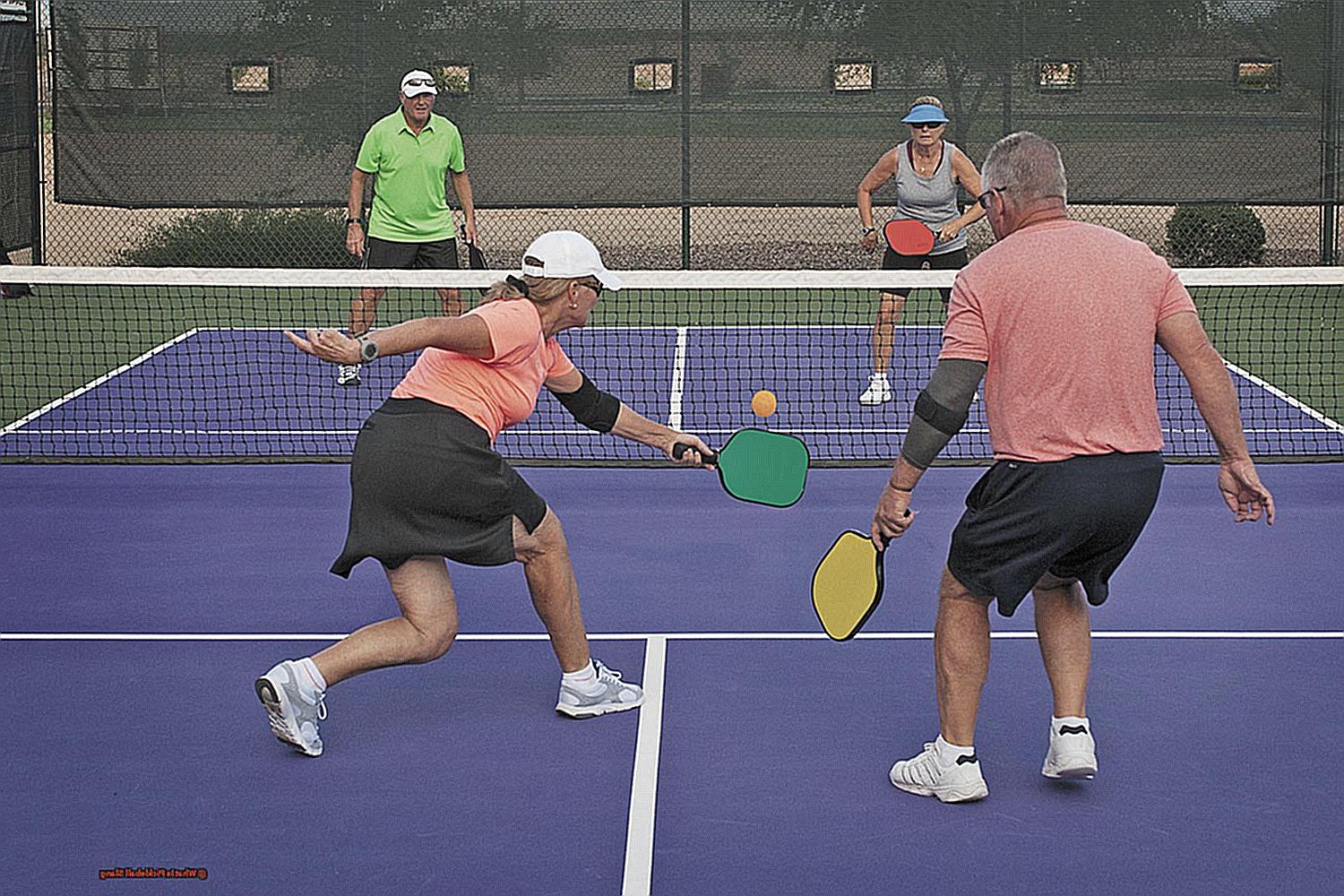
Look no further than the elusive “lob” shot. This high-flying technique can be a game-changer when executed with precision. In this post, we will delve into the essential elements needed for a successful lob shot and how it can be strategically utilized in your game.
The Fundamentals of a Lob Shot:
A lob shot involves striking the ball high into the air, causing it to drop behind your opponent, making it both an offensive and defensive maneuver. It requires a continental grip, where the paddle is held with the index finger slightly separated from the other fingers. This grip provides optimal control and power for executing a lob shot.
Mastering the Lob Shot:
To master the lob shot, there are several key elements to consider. First, begin with a low-to-high swing, using an open face on your paddle. This action will generate the necessary height and trajectory for the perfect lob. Aim for a deep target, preferably towards the back of the court, to limit your opponent’s reaction time. Timing and precision are paramount in executing a lob shot; thus, consistent practice and developing good judgment are vital.
Strategic Usage of the Lob Shot:
The opportune moment to use a lob shot is when your opponent is close to the net or not paying attention. This unexpected move can catch them off guard and potentially lead to winning the point. It’s also an effective tactic against aggressive opponents who dominate play at the net.
Pro Tips for Doubles Play:
In doubles play, effective communication and coordination with your partner are crucial when using lob shots. It’s essential to communicate with your partner before executing a lob shot, so they can anticipate any potential returns from your opponents.
Defending Against Lob Shots:
If you find yourself on the receiving end of a lob shot, don’t succumb to panic. Keep your focus on the ball and position yourself strategically to return it. In doubles play, communicate with your partner to avoid confusion and determine who will take the shot.
To conclude, the lob shot can be a game-changer in pickleball if executed effectively. Keep in mind the continental grip, low-to-high swing with an open face, and aim for a deep target. With consistent practice and sound judgment, you can add this skill to your repertoire and leave your opponents perplexed on the court.
Kitchen
Pickleball is a game of strategy and skill, with players constantly seeking ways to outsmart their opponents. Two key tactics used in this sport are kitchen play and stacking. These techniques involve positioning and shot selection to gain an advantage on the court.
Kitchen play, also known as the “non-volley zone,” is a crucial aspect of pickleball. This area near the net restricts players from hitting the ball on the fly, forcing them to use dinking and volleying techniques. A popular strategy in kitchen play is to maintain control of the non-volley zone with short, soft shots, causing your opponents to make mistakes or return weak shots.
Another tactic used in pickleball is stacking, where one player stands in front of their partner, creating an angled formation on the court. This allows for better court coverage and enables players to hit powerful shots from different angles. Stacking is often employed when one player has a stronger backhand or forehand, positioning themselves on that side of the court.
There are other techniques to consider in pickleball, such as the “third shot drop,” where a soft, low shot is hit over the net after the team’s third shot (typically a return of serve). This forces opponents to hit upward shots, giving you more time to set up for a winning shot.
Avoiding “No Man’s Land” is another essential aspect of pickleball strategy. This area between the non-volley zone and baseline is challenging to hit effective shots from and is often referred to as the “dead zone.” To improve your chances of winning points, stay in the non-volley zone or behind the baseline.
Honesty in line calls is also crucial in pickleball. As a player, it is essential to make fair and accurate calls, even if it means losing a point. This promotes good sportsmanship and maintains the integrity of the game.
In conclusion, mastering kitchen play and stacking can greatly enhance your pickleball skills. However, there are many other strategies and techniques to consider, such as the third shot drop and avoiding No Man’s Land.
Other Common Pickleball Slang
Pickleball is not just a game, it’s a way of life. And like any culture, it has its own unique vocabulary – a collection of words and phrases used to describe various aspects of the sport. If you’re new to pickleball, these terms may seem foreign, but don’t worry. In this section, we’ll break down some other common pickleball slang terms and help you become fluent in the language of pickleball.
- Ace: Let’s begin with a term that most people are familiar with in other racket sports – the ace. In pickleball, an ace refers to a serve that is not returned by the opponent. It’s like scoring a point without even breaking a sweat.
- Approach shot: This is a shot that is hit while advancing towards the net. It’s an excellent way to apply pressure on your opponent and set yourself up for a winning shot.
- Backcourt: Similar to other racket sports, the backcourt in pickleball refers to the area near the baseline, inside the court. This is where players usually stand when returning serves or hitting shots from the back of the court.
- Backspin: Also known as underspin or slice, backspin is a spin applied to the ball by striking it with an upward to downward motion. It can be used to control the placement and speed of the ball, making it challenging for opponents to return.
- Backhand: A stroke made on the non-dominant side of the body is known as a backhand. In pickleball, this typically means striking the ball with your paddle on your left side (if you’re right-handed) or your right side (if you’re left-handed).
- Baseline: This is the line at the end of the court that marks the boundary of play. It’s crucial to stay behind this line when serving and returning serves.
- Bounce it: This is a call made by a player to inform their partner to let the ball bounce before hitting it. In pickleball, there is a rule called the “two-bounce rule” which states that the ball must bounce twice before it can be hit in the non-volley zone. So if you hear someone shouting “bounce it,” it means you should let the ball bounce before hitting it to avoid a fault.
Now that you’re familiar with some common pickleball terms, you can start using them on the court like a seasoned pro. And remember, just like any language, the best way to become fluent is by practicing.
Conclusion
In conclusion, pickleball slang is a crucial element of the vibrant and dynamic world of this wildly popular sport. From “dink” to “Ernie,” these unique terms not only add a playful element to the game but also serve as a means of effective communication among players.
Familiarity with pickleball lingo is essential for understanding the rules and strategies of the game, making it an indispensable skill for players at all levels.
As we’ve explored in this article, pickleball terminology goes beyond simply describing shots and situations on the court. It fosters a sense of community and camaraderie among players, promoting a fun and inclusive environment. And let’s not forget the importance of integrity in this sport – from making fair line calls to displaying respectful conduct towards opponents.
So whether you’re a seasoned player or new to the game, understanding pickleball slang is crucial for fully immersing yourself in this tight-knit community. So grab your paddle, hit the court, and use your newfound knowledge to elevate your gameplay and impress your opponents.

